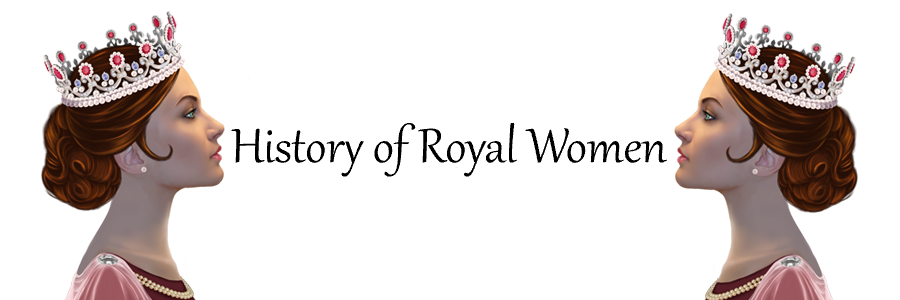
Queen Zhuang Zhi was the queen consort to King Qingxiang of Chu. They were different in both ages and status.[1] She was a twelve-year-old commoner.[2] King Qingxiang of Chu was in his forties.[3] Nevertheless, Queen Zhuang Zhi was known for wisdom, and she saved Chu from being invaded by a rival kingdom.[4] Through Queen Zhuang Zhi’s guidance, she was able to make Chu into a strong nation.[5]
In circa 260 B.C.E., Queen Zhuang Zhi of Chu was born.[6] She lived during the Warring States Period (which lasted from 475-221 B.C.E.).[7] During this period, the seven states of China–Qin, Chu, Zhao, Wei, Han, Yan, and Qi–declared independence from the ruling Zhou Dynasty and formed their own Dynasties.[8] The states were often in conflict with one another.[9] Queen Zhuang Zhi’s given name was Xing.[10] Zhi means “niece.”[11] Therefore, she was a niece of a man named Zhuang.[12] Zhuang Zhi was a commoner who lived in the district capital of Chu.[13] Chu was ruled by King Qingxiang (who reigned from 298-263 B.C.E.).[14]
King Qingxiang of Chu was surrounded by corrupt ministers who had been bribed by the rival state of Qin to distract the king from state affairs.[15] King Qingxiang of Chu was in his forties and had no heir.[16] He often went on pleasurable outings.[17] Chu became endangered because of his neglect of the kingdom.[18] One day, King Qingxiang of Chu’s ministers persuaded King Qingxiang of Chu to go on a pleasure trip to Tang (which was 155 miles south of the Chu capital).[19] This meant that the corrupt Chu ministers would let Qin invade Chu.[20]
Even though Zhuang Zhi was twelve years old, she learned that the Qin was planning to invade during King Qingxiang of Chu’s absence.[21] She wanted to find King Qingxiang and bring him back to the capital.[22] However, her mother forbade her from finding the king.[23] Zhuang Zhi decided to disobey her mother.[24] She ran away from home, sat down next to the road the king was travelling on, and waved the flag as he passed.[25]
King Qingxiang of Chu noticed her and allowed her to speak to him.[26] She urgently expressed the danger he was in.[27] She also warned him of the dangers of focusing on his luxurious lifestyle at the expense of the people.[28] Despite their ages and status differences, King Qingxiang was deeply impressed with Zhuang Zhi.[29] He listened to her advice.[30] He turned back to the capital with Zhuang Zhi by his side.[31] Once they arrived at the capital gates, they learned that his rebel ministers had closed it off as they waited for the Qin army to invade.[32] King Qingxiang of Chu raised an army from the provinces that were loyal to him.[33] He crushed those who rebelled against them.[34] Qin lost the opportunity to invade Chu.[35]
After King Qingxiang managed to crush the rebellion, he made Zhuang Zhi his queen.[36] Queen Zhuang Zhi helped make Chu to be a frugal nation.[37] She helped her husband attend to the well-being of the people.[38] Through Queen Zhuang Zhi’s guidance, Chu quickly became a strong nation.[39] The date and cause of Queen Zhuang Zhi’s death are unknown.[40]
Queen Zhuang Zhi initially violated Confucian principles.[41] She disobeyed her mother, ran away from home, and eloped with King Qingxiang of Chu.[42] Nevertheless, she embraced Confucian principles in the end.[43] She put her king and her kingdom before herself.[44] King Qingxiang and Queen Zhuang Zhi formed a great partnership and were very successful in establishing Chu as a powerful nation.[45] In Biographies of Eminent Women, Queen Zhuang Zhi’s biography is categorized under “Biographies of Those Able in Reasoning and Understanding.”[46]
Sources:
Chen, X. (2019). “The Ideology and Significance of the Legalists School and the School of Diplomacy in the Warring States Period.” 4th International Conference on Modern Management, Education Technology and Social Science (MMETSS 2019). Atlantis Press.
Cook, C. A. (2015). “Zhuang Zhi, Wife of King Qingxiang of Chu”. Biographical Dictionary of Chinese Women: Antiquity Through Sui, 1600 B.C.E. – 618 C.E. (L. X. H. Lee, Ed.; A. D. Stefanowska, Ed.; S. Wiles, Ed.). NY: Routledge. p. 96.
Liu, X., Kinney, A. B. (2014). Exemplary Women of Early China: The Lienü Zhuan of Liu Xiang. United Kingdom: Columbia University Press.
[1] Cook, 2015
[2] Cook, 2015
[3] Cook, 2015
[4] Cook, 2015
[5] Liu and Kinney, 2014; Cook, 2015
[6] Cook, 2015
[7] Liu and Kinney, 2014
[8] Chen, 2019
[9] Chen, 2019
[10] Liu and Kinney, 2014
[11] Cook, 2015, p. 96
[12] Cook, 2015
[13] Cook, 2015
[14] Cook, 2015
[15] Cook, 2015
[16] Cook, 2015
[17] Cook, 2015
[18] Cook, 2015
[19] Cook, 2015
[20] Cook, 2015
[21] Cook, 2015
[22] Cook, 2015
[23] Cook, 2015
[24] Cook, 2015
[25] Cook, 2015
[26] Cook, 2015
[27] Cook, 2015
[28] Cook, 2015
[29] Cook, 2015
[30] Cook, 2015
[31] Cook, 2015
[32] Cook, 2015
[33] Cook, 2015
[34] Cook, 2015
[35] Cook, 2015
[36] Cook, 2015
[37] Liu and Kinney, 2014
[38] Liu and Kinney, 2014
[39] Liu and Kinney, 2014
[40] Cook, 2015
[41] Liu and Linney, 2014
[42] Liu and Kinney, 2014
[43] Liu and Kinney, 2014
[44] Liu and Kinney, 2014
[45] Liu and Kinney, 2014
[46] Cook, 2015, p. 96

Be the first to comment